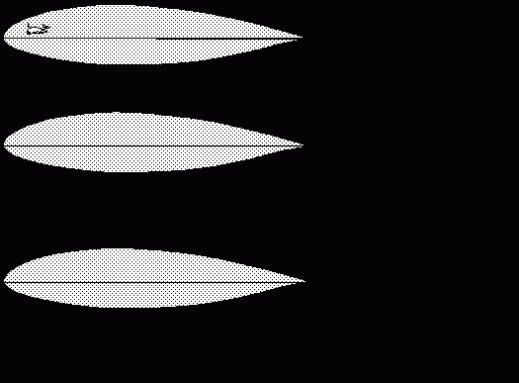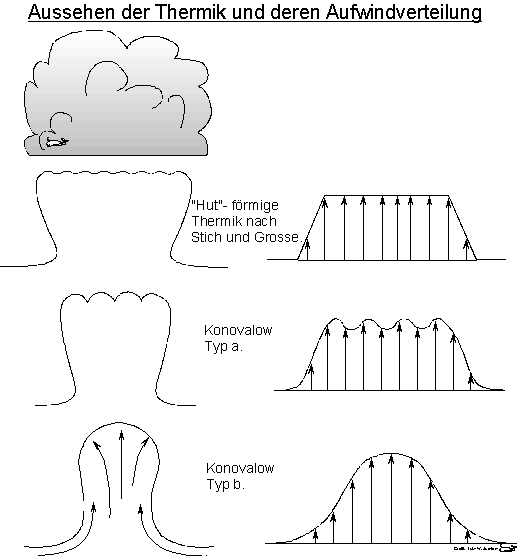Laminar Flying in Turbulent Air
Is that even possible? The short answer: yes it is, and it works surprisingly well as is continually demonstrated by soaring pilots with their composite sailplanes. Obviously they fly using thermals, which is nothing else than natural turbulence created by thermal convection, that is to say air circulation caused by solar insulation.
This finding should actually encourage others in aviation to emulate soaring pilots and make use of the laminar nature of the friction boundary layer because most of them fly in far less turbulent parts of the atmosphere than – per force – soaring pilots. With this article I would really like to encourage researchers and designers to copy soaring pilots, thereby saving a large amount of energy.
The friction drag of good laminar wing profiles is only about half as much as that of non-laminar flow profiles. Separated flow easily produces ten times more drag. Flow separations can often be delayed if energy can be saved through laminar flow in the friction boundary layer.

The following factors are known to more or less influence natural laminar flow and to cause the pre-mature change to turbulent flow:
- Aircraft vibration
- Noise
- Waviness and presence of dirt on the aircraft surface
- The existance of turbulence in the airmass
The first two disturbance factors are naturally (almost) non-existant with sailplanes. Sailplane designers and pilots have for generations tried hard to keep them as clean and wave free as possible.
What about turbulence in the airmass? Unfortunately not as good, if you ignore for the moment the extremely quiet flying in wave lift.
If you ask the meteorologists you realize that turbulence has a different meaning for them than for experts in aerodymanics with its really thin boundary layer.
But it is nevertheless possible to learn that turbulence is created in large eddies which continually dissolve into smaller eddies and isn’t converted to heat until they have a diameter of a few millimetres.
The meteorologists have measured this cascade-like deterioration of large eddies down to those of a few meters in diameter and are satisfied with that.
Aerodynamicists only know turbulent eddies of less than one meter diameter from tests in wind tunnels and boundary layer research. They also know that turbulence in wind tunnels suppresses favourable laminar effects and especially endeavoured to build wind tunnels with low turbulence.
Let’s remember that meteorologist Carsten Lindemann said that turbulent eddies don’t disappear and are not turned into heat by air viscosity until they have a diameter in the order of millimeters.
In the case of thermals, large eddies are created very close to the ground and are already subjected to the cascade-like dissolution into smaller eddies while they are rising.

Don’t we all agree that thermals close to the ground or on a mountain side are extensively turbulent and become less so with increasing height? It is only the presence of wind shears which creates new turbulence, but this also gradually decreases.
Can’t we see the cascading effect in our much-loved cumulus clouds? Don’t we all head for “fresh” cumulus clouds in which we can see relatively large eddies with their sharp contours? Aren’t the products of the decomposition of large structures clearly visible? A cumulus cloud which already has such small eddies that it appears blurred and shredded is described as “decayed”.
Unfortunately, in this condition the millimeter size of the turbulent eddies has not yet been reached and with that their dissolution into heat. Rather, we must assume that the scale has been reached which disturbs laminar flow a wind tunnel and consequently also more or less affects our sailplanes.
The only difference which scientists today are able to distinguish between wind tunnel turbulence and free turbulence, is that free turbulence has already had many dissolution phases behind it, and that those in a wind tunnel have just been created and are additionally deformed by the wind tunnel itself.
However, does that make a significant difference with respect to possible laminar flow? The following data is important to those readers who have now caught the bug of turbulence research and would like to inform themselves:
- In 1922 the well-known British hydrodynamicist L.F. Richardson described the energy cascade process in 4 lines, see {Lit.1}:
Big whirls have little whirls
which feed on their velocity,
little whirls have smaller whirls
and so on to viscosity.”
- In 1941 the Russian mathematician A.N. Kolmogorov published three significant articles about his hypothesis concnering the local isotropic structure of turbulence and the preservation of kinetic energy of turbulence during the cascade-like dissolution of turbulent eddies, see {Lit.2}.
- In 1948 C.F. v. Weizsäcker discovers, independent of Kolmogorov, the same natural laws and Werner Heisenberg formulates the transition of energy into heat, see {Lit.2).
Since then many scientists, among them 1956 soaring world champion Dr. Paul MacCready Jr., have been able to measure, with experiments conducted in oceans, the atmosphere, water and wind tunnels and even directly in streams behind jet nozzles, that the preservation of kinetic energy during the cascading process is valid down to units of millimeters and that the turbulence gradually becomes increasingly homogeneous and does not disappear until it reaches very small diameters and is transformed into heat energy.
How this small eddy turbulence affects the performance and flying characteristics of our sailplanes and particularly what countermeasures can be applied successfully, will be described in a subsequent article.
Poppenhausen, den 08.12.1999 (Gerhard Waibel)
Reference literature:
[ Lit. 1 ] Various authors: promet 1 / 2 ’77, meteorologische fortbildung, herausgegeben von Deutscher Wetterdienst, Offenbach, Germany, 1977.
[ Lit. 2 ] H. SCHLICHTING, K. GERSTEN: GRENZSCHICHT-THEORIE; 9., völlig neu bearbeitete und erweiterte Auflage, Springer-Verlag Berlin Heidelberg New York, 1996, ISBN 3-540-55744-X
